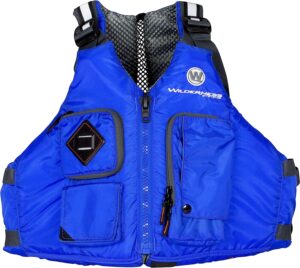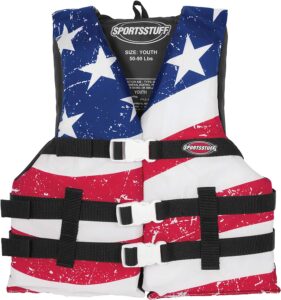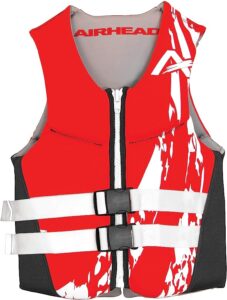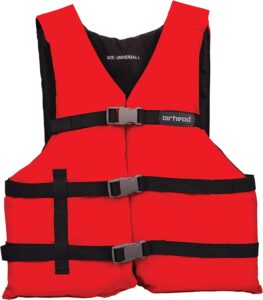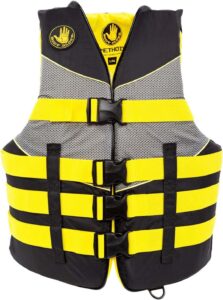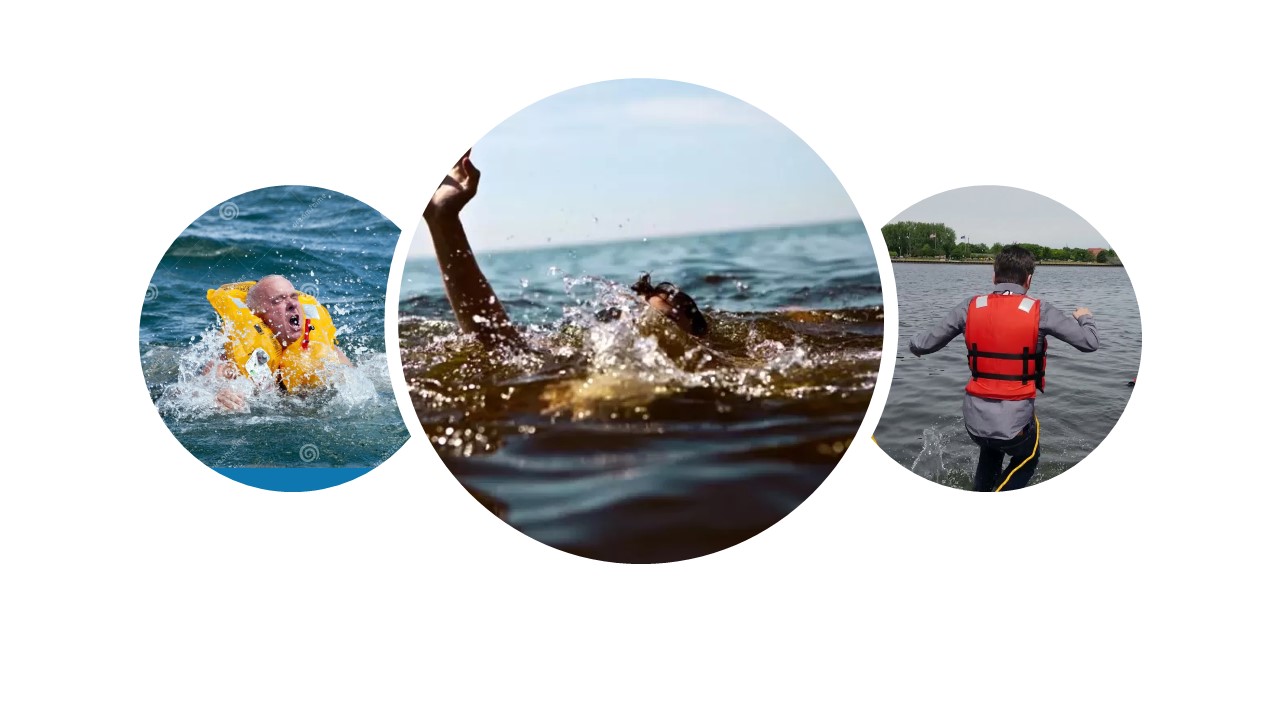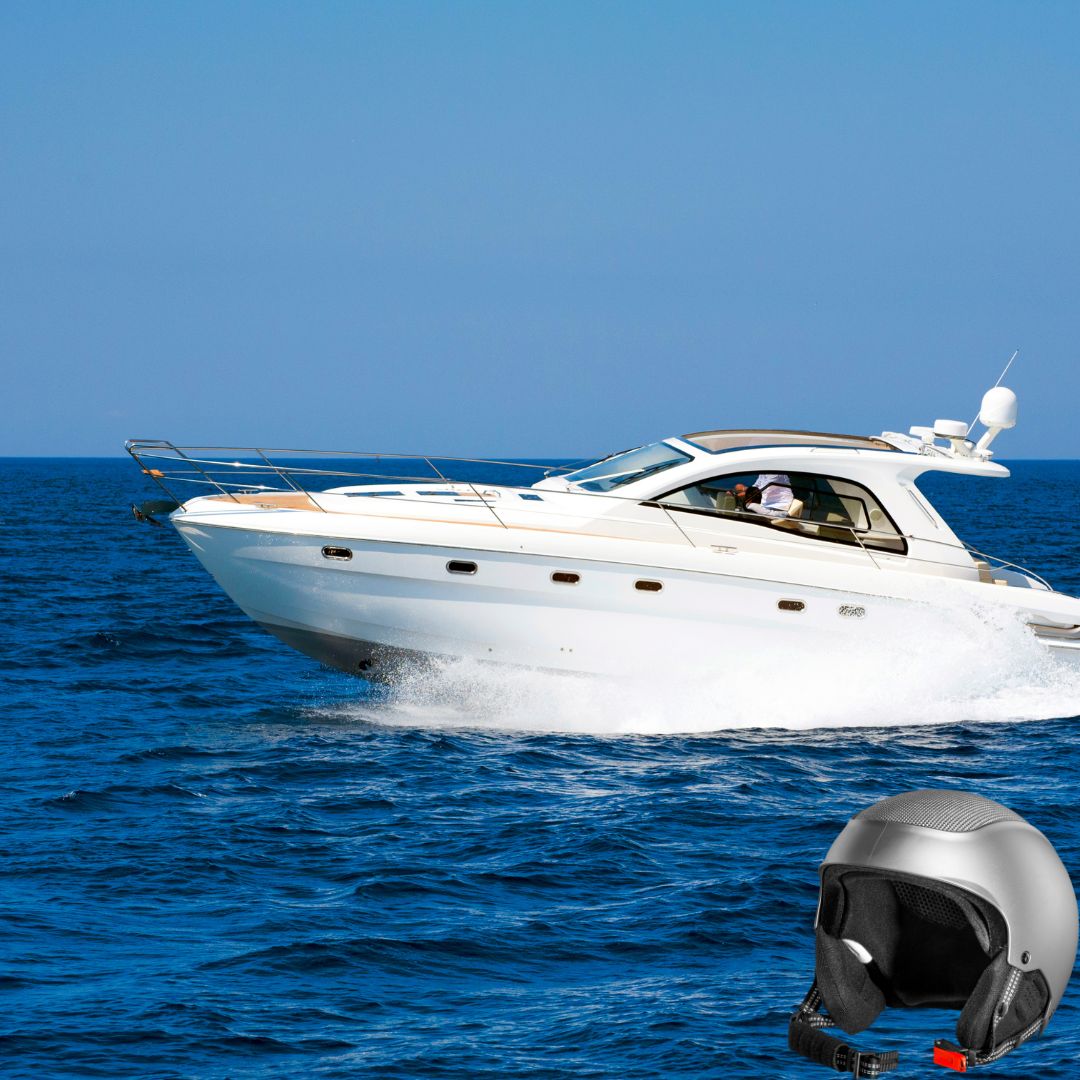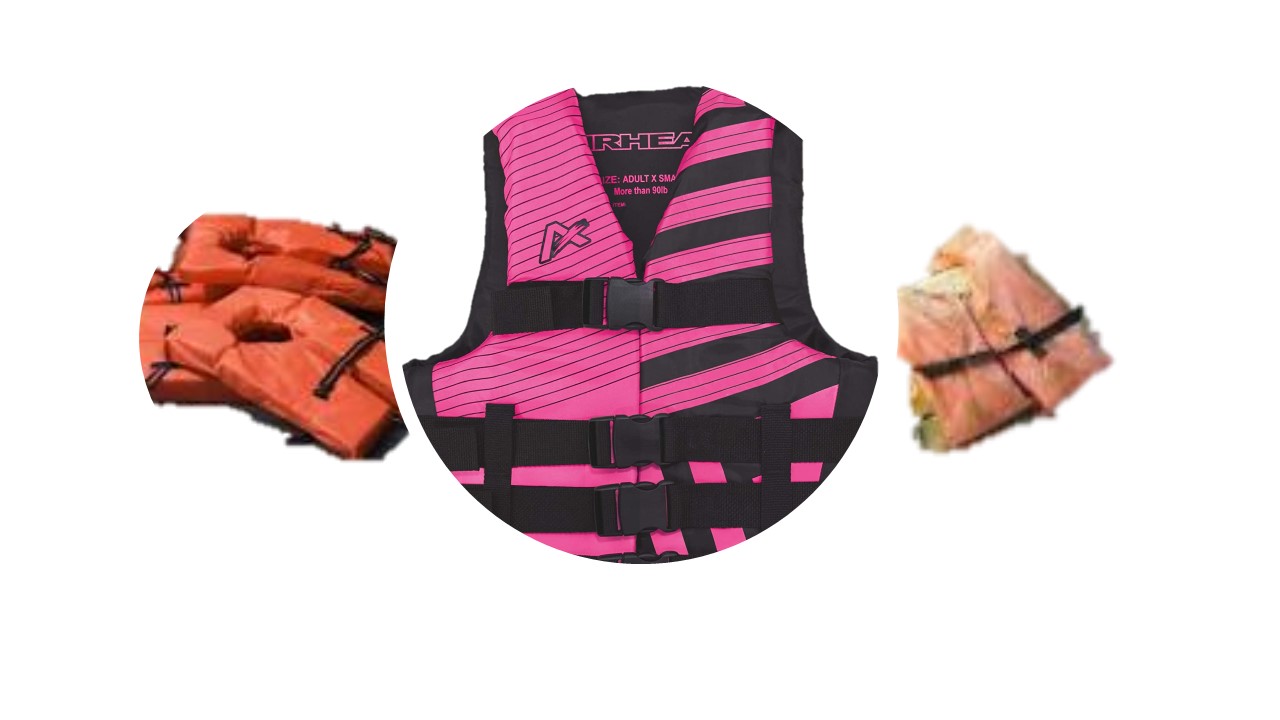What Is A Characteristic Of A Type 3 Life Jacket
What is a characteristic of a type 3 life jacket? A characteristic of a Type 3 life jacket is its ability to provide buoyancy and assistance to conscious individuals in calm waters, ensuring their safety and keeping them afloat.
If you are gasping for air and you desperately struggle to stay afloat amidst the vast expanse of water, panic may set in as you realize your energy is rapidly fading. In that heart-pounding moment, a single thought consumes your mind: ‘Will anyone come to my rescue?’ This is where a Type 3 Life Jacket becomes your lifeline, providing the vital characteristics you need to survive.
In this article, we will delve into the characteristics of a Type 3 Life Jacket, exploring the features that make it a vital tool for water enthusiasts. From its buoyancy rating to its design and comfort, we will unveil the key elements that ensure your safety and increase your chances of survival.
What Is A Characteristic Of A Type 3 Life Jacket
A Type III life jacket is a personal flotation device (PFD) that is designed to provide buoyancy for conscious wearers. It is not crafted to turn unconscious wearers face up in the water. Type III life jackets are typically used for recreational activities such as water skiing, sailing, and fishing.
So, what is a characteristic of a type 3 life jacket? Here are the characteristics of type 3 life jacket:
1. Type 3 Life Jacket Is Made For Calm Water
Type 3 life jackets are specifically designed to be used in calm water conditions. They are not suitable for rough or open waters where stronger currents or waves are present.
These life jackets excel in providing buoyancy and assistance to conscious individuals in serene environments such as lakes, ponds, or pools. Their design focuses on allowing you to comfortably move your arms and legs for activities like swimming, paddling, or participating in water sports.
It’s important to recognize that the usage of Type 3 life jackets should be limited to the intended calm water settings, as they may not offer the same level of safety in more challenging or turbulent aquatic environments.
2. They Are Designed With Specific Materials
Type 3 life jackets are constructed using a variety of materials that are chosen for their buoyancy, durability, and comfort.
The selection of materials ensures that the life jacket can effectively keep you afloat while providing a comfortable and secure fit. Here are some common materials used in the construction of Type 3 life jackets:
– Foam Core: Type 3 life jackets typically feature a PVC foam core as the primary buoyancy material in the front and EPE foam in the back. These foam types are lightweight and designed to provide the necessary buoyancy to keep you above water.
– Outer Shell: The outer shell of Type 3 life jackets is usually made of durable and water-resistant materials such as nylon or neoprene. These materials are chosen for their ability to withstand exposure to water, UV rays, and general wear and tear.
– Straps and Fasteners: Type 3 life jackets feature adjustable straps and fasteners to ensure a secure and personalized fit.
These straps are commonly made of nylon webbing, which are strong and resistant to stretching. Buckles and fasteners are typically made of sturdy plastic to provide reliable and easy-to-use closures.
– Padding and Lining: Some Type 3 life jackets may include padding or lining materials to enhance comfort and reduce chafing or irritation. Soft and breathable materials such as neoprene or mesh may be used for this purpose.
The padding adds an extra layer of cushioning and helps improve the overall fit and feel of the life jacket.
3. Buoyancy
Type 3 life jackets are designed to provide sufficient buoyancy to keep conscious individuals afloat in calm waters. They typically have a minimum buoyancy rating of 15.5 pounds (7 kg) or higher, ensuring that wearers remain above water.
4. Mobility
Type 3 life jackets offer a greater range of motion compared to other types. They allow you to freely move your arms and legs, enabling activities such as swimming, paddling, or participating in water sports without hindrance.
5. Design and Comfort
These life jackets are constructed with comfort in mind. They often feature adjustable straps that allow for a secure and personalized fit. Additionally, padding and lightweight materials are incorporated to enhance comfort, ensuring that you can comfortably wear the life jacket for extended periods.
6. Visibility
Many Type 3 life jackets are designed with high-visibility colors, making it easier for rescuers or other individuals to spot wearers in the water. Reflective materials may also be added to enhance visibility during low-light conditions, improving overall safety.
7. Additional Features
Type 3 life jackets may come equipped with additional features that enhance their practicality.
These can include pockets for storing small items like safety whistles or personal belongings, attachment points for safety equipment such as lights or knives, or even integrated harness systems for specific water activities.
8. Compliance with Safety Standards
Type 3 life jackets are manufactured to meet specific safety standards, such as those set by the U.S. Coast Guard or other regulatory bodies.
These standards ensure that the life jackets undergo rigorous testing and meet strict criteria for buoyancy, materials, and overall performance, providing you with reliable and compliant safety equipment.
The Best Type III Life Jackets
| Life Jacket | Features | Pros | Cons | Price |
| SPORTSTUFF Stars and Stripes Life Jacket | – US Coast Guard Approved. – Open Sided Design. – Three Body Belts with Buckles. – Soft UV and Stain Resistant Shell. – Follows USCG Sizing | – Less bulky design for better range of motion. – Ventilated for increased comfort. – Quick-release buckles for easy on/off. – Durable construction. – Follows USCG sizing guidelines. | – Limited sizing options. – Bulky design for some users | Check Price |
| Body Glove Adult Water Life Vest | – Durable Woven Polymer Shell. – Lightweight PE Foam. – Oversized Arm Holes. – 4 Heavy Duty Belts with Quick Release Buckles. – Drain Holes | – Durable and lightweight construction. – Comfortable fit with oversized arm holes. – Secure fit with quick release buckles. – Strategically placed drain holes | – Limited additional features | Check Price |
| AIRHEAD General All Purpose Life Jacket | – US Coast Guard Approved. – Open Sided Design. – Side Release Buckles. – Soft UV and Stain Resistant Shell. – Follows USCG Sizing | – Less bulky design for better range of motion. – Ventilated for increased comfort. – Quick-release buckles for easy on/off. – Durable construction. – Follows USCG sizing guidelines | – Limited sizing options | Check Price |
| Airhead Swoosh Kwik-Dry Neolite Life Jacket | – US Coast Guard Approved. – Zipper and Buckle Closures. – KWIK Dry Neolite Material. – Less Bulky Design. – Segmented and Hinged for Freedom of Movement | – Meets USCG requirements for Type III Life Jacket. – Comfortable and quick-drying neolite material. – Secure fit with zipper and buckle closures. – Provides freedom of movement | – Limited additional features | Check Price |
| Wilderness Systems Meridian Kayaking Life Jacket | – Comfortable for High Back Kayak Seats. – Collaboration with Astral Designs. – Thin-Vent Back for Breathability. – Quick-Access Knife Tab. – Reflective Trim. – Storable Drink Holder. – Lightweight PE Foam Construction. | – Specifically designed for comfort. – Collaboration with safety gear industry leader. – Breathable back design. – Convenient features like knife tab and whistle holder. – Lightweight and comfortable construction. | – Limited sizing options | Check Price |
Benefits Of Using Type III Life Jackets
Type 3 life jackets offer several advantages that make them a popular choice for water activities in calm waters where there is a high chance of being rescued quickly.
They are not a good choice for people who are participating in activities where there is a high risk of being unconscious in the water, such as whitewater rafting or kayaking.
Here are some of the benefits of using a Type III life jacket:
- Buoyancy and Floatation
- It offers mobility and range of motion.
- It provides a more comfortable fit than other types.
- It is versatile and can be used for different water activities in calm water.
- It complies with Safety standards.
- It is super easy to use.
- It can help you to stay afloat in the water.
- It can help you to stay warm in cold water.
- It can help you to be seen by rescuers.
RELATED: Do You Need A Life Jacket To Kayak- Discover The Definitive Answer Now
Disadvantages Of Type 3 Life Jackets
While Type 3 life jackets have their advantages, it’s important to be aware of their limitations or potential drawbacks. Here are some cons associated with using Type 3 life jackets:
- Not suitable for rough waters.
- Reliance on conscious wearers as it may not help unconscious individuals.
- Potential for discomfort when worn for extended periods.
- Limited protection against extreme weather conditions
- Variations in quality and performance
If you are considering using a Type III life jacket, it is important to talk to your doctor or a boating safety instructor to make sure that it is the right choice for you.
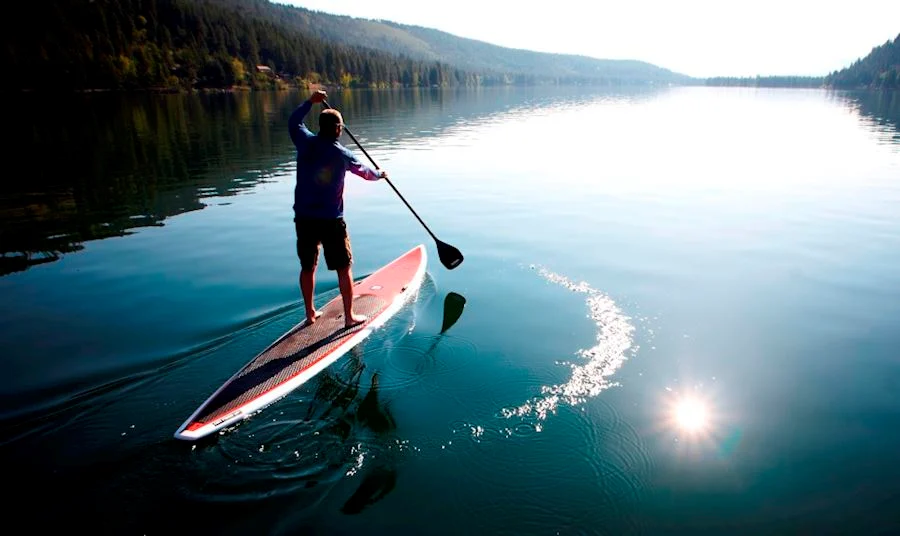
Water Activities Best Suited For Type 3 Life Jackets
Type 3 life jackets are well-suited for a variety of water activities in calm waters. Here are some examples of water activities where Type 3 life jackets are a good choice:
- Kayaking and Canoeing: Type 3 life jackets are ideal for kayaking and canoeing due to their mobility and range of motion. They allow paddlers to freely move their arms and navigate through calm waters with ease.
- Stand-Up Paddleboarding (SUP): Type 3 life jackets provide the necessary buoyancy and comfort for individuals engaged in stand-up paddleboarding. They allow paddlers to maintain balance while enjoying the tranquility of calm waters.
- Sailing and Yachting: These life jackets offer the required buoyancy and mobility for sailors and yacht enthusiasts. They allow for free movement on deck while providing essential safety in case of accidental falls overboard.
- Fishing: The jackets are suitable for fishing activities in calm waters. They provide the necessary flotation for anglers while allowing them to cast their lines and maneuver comfortably.
- Water Tubing and Water Skiing: Type III life jackets provide the necessary buoyancy and mobility for individuals engaged in water tubing or water skiing activities. They allow participants to enjoy thrilling rides while ensuring safety in case of falls or sudden stops.
- Beach and Pool Activities: Type 3 life jackets are also suitable for beach and pool activities, especially for those who prefer extra flotation support or are still building their swimming skills. They provide added peace of mind for individuals of all ages enjoying recreational water play.
It’s important to note that the choice of a Type III life jacket for any specific water activity should consider the individual’s swimming ability, the specific water conditions, and any additional safety requirements associated with the activity.
Always prioritize personal safety and follow recommended guidelines for each water activity.
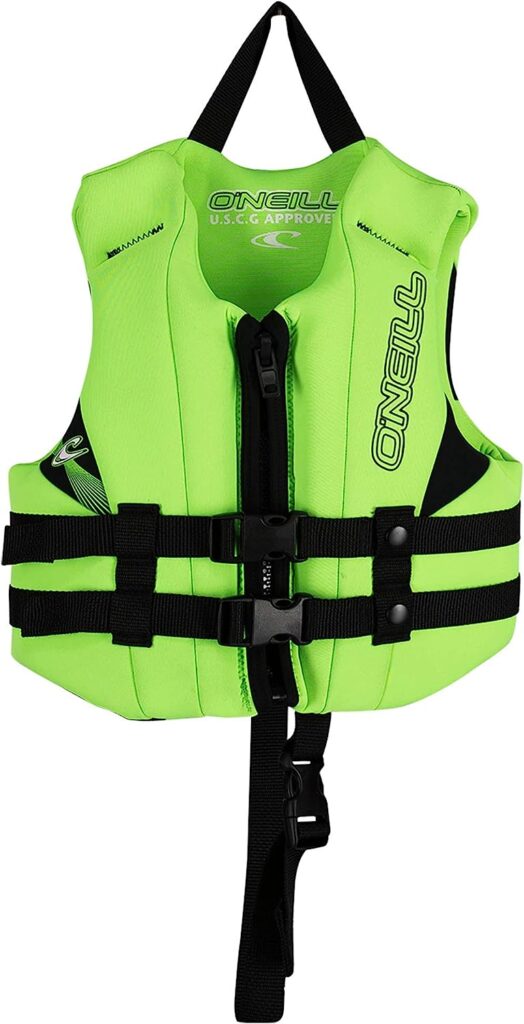
Tips For Choosing And Using A Type III Life Jacket
Here are some valuable tips to help you choose and use a Type III life jacket effectively:
1. Proper Fit
Ensure that the life jacket fits snugly and comfortably. Adjust the straps and buckles to achieve a secure and personalized fit. A properly fitted life jacket is crucial for optimal buoyancy and mobility.
2. Buoyancy Rating
Check the buoyancy rating of the Type III life jacket. It should provide sufficient buoyancy for your weight and intended water activities. The minimum buoyancy rating for Type III life jackets is typically 15.5 pounds (7 kg).
3. Safety Standards
Look for a Type III life jacket that meets recognized safety standards, such as those set by the U.S. Coast Guard (USCG). Compliance with these standards ensures that the life jacket has undergone rigorous testing and meets specific criteria for buoyancy, performance, and durability.
4. Activity-Specific Features
Consider any specific features or requirements based on your intended water activities. For example, if you plan to go boating at night, choose a life jacket with reflective strips for enhanced visibility. If you’re engaging in water sports, look for a life jacket with additional attachment points for safety equipment.
5. Check for Damage
Inspect the life jacket for any signs of wear, tear, or damage before each use. Ensure that zippers, straps, and buckles are in good working condition. Replace a damaged or deteriorated life jacket to maintain its effectiveness and avoid being drowned even with a life jacket.
6. Regular Practice
Familiarize yourself with the proper usage and donning of your Type III life jacket. Practice putting it on, adjusting the straps, and performing any necessary adjustments to ensure a quick and correct fit. Regular practice will help you feel more comfortable and confident when wearing the life jacket.
7. Educate Others
If you’re going boating or participating in water activities with others, make sure they understand the importance of wearing and properly using a Type III life jacket. Encourage everyone to wear their life jackets at all times while on the water.
RELATED: Do You Need A Life Jacket On A Paddle Board – Unveiling The Key To Safe And Enjoyable Adventures
Type 3 Life Jacket Maintenance And Care
Proper maintenance and care of your Type III life jacket are essential for its continued effectiveness and longevity. Here are some guidelines to help you maintain and care for your life jacket:
1. Cleaning
After each use, rinse your life jacket with fresh water to remove any salt, sand, or debris. Use a mild detergent or soap, if necessary, but avoid harsh chemicals that could damage the materials.
Gently scrub any stains or spots and rinse thoroughly. Allow the life jacket to completely air dry before storing it.
2. Storage
Store your Type III life jacket in a cool, dry place away from direct sunlight and extreme temperatures. Hanging the life jacket on a sturdy hanger or laying it flat is ideal to maintain its shape. Avoid storing it in compressed or folded positions that could cause damage or deform the foam core.
3. Inspections
Frequently inspect your life jacket for signs of wear, tear, or damage. Check the straps, buckles, and zippers for proper functioning. Look for any punctures, fraying, or disintegration of materials. If you notice any major damage or decline, replace the life jacket immediately.
4. Repairs
If minor repairs are needed, such as re-stitching loose seams or replacing a damaged buckle, follow the manufacturer’s instructions or seek professional repair services. Avoid using adhesives or materials that may compromise the integrity of the life jacket.
5. Foam Integrity
Pay attention to the foam core of your Type III life jacket. If you notice any loss of buoyancy or significant compression of the foam, it may be time to replace the life jacket. The foam core is essential for keeping you afloat, so its integrity should not be compromised.
6. Proper Handling
Handle your life jacket with care, avoiding sharp objects or rough surfaces that could damage the outer shell or foam core. Keep it away from pets or rodents that may chew on the materials.
7. Follow The Manufacturer’s Instructions
Always refer to the specific care and maintenance instructions provided by the manufacturer of your Type III life jacket. They may have specific recommendations or guidelines for cleaning, storage, and inspections based on the materials and construction of the life jacket.
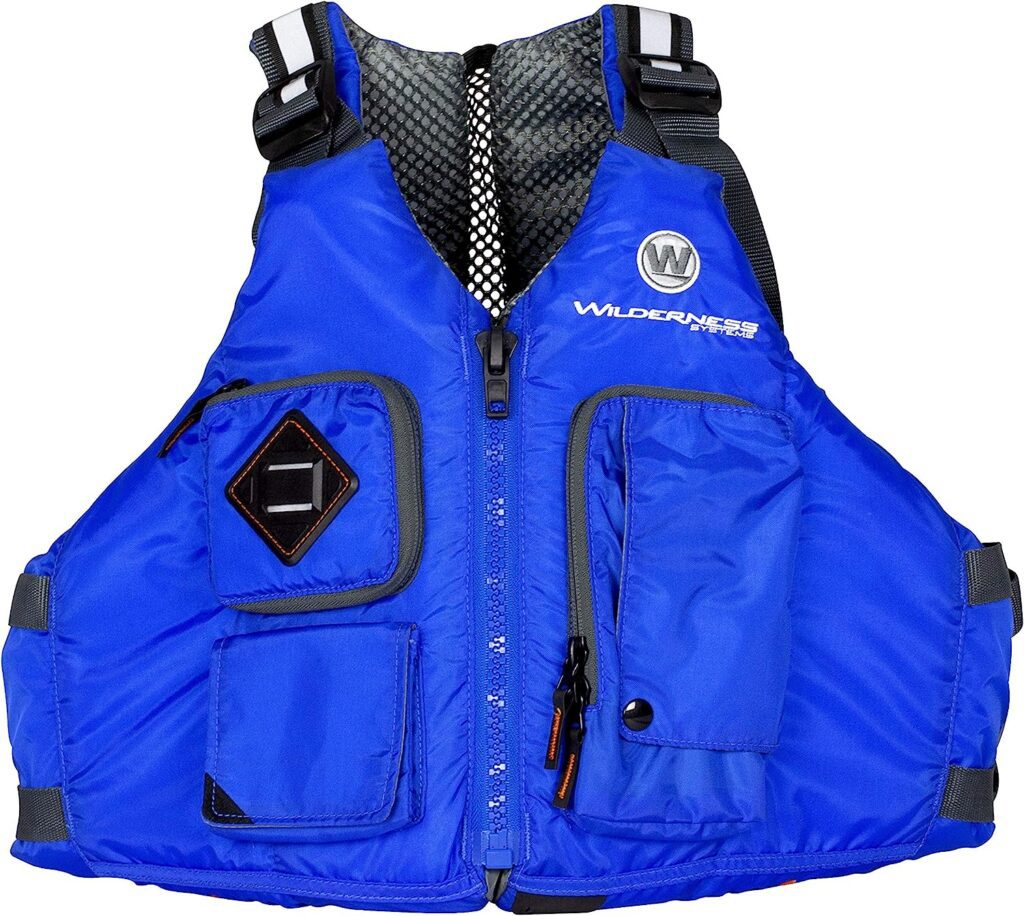
Relevant Safety Standards Or Certifications That Type 3 Life Jackets Should Adhere To
Type III life jackets should adhere to relevant safety standards and certifications to ensure their reliability and compliance. The most recognized safety standards for life jackets in the United States are those set by the U.S. Coast Guard (USCG).
The USCG establishes rigorous criteria for buoyancy, performance, and construction materials. Look for Type III life jackets that are USCG-approved, indicating that they have undergone testing and meet the required standards for safety and performance.
Other regulatory bodies or organizations, such as Transport Canada, may have their own certification standards that ensure the quality and effectiveness of life jackets. Choosing a Type III life jacket that complies with these safety standards provides assurance and confidence in the reliability of the product.
Other Types Of Life Jackets And Water Activities They Are Good For
There are several types of life jackets available, each designed for specific water activities and conditions. Here are some other types of life jackets, along with their characteristics and the water activities they are best used for:
1. Type I (Offshore Life Jacket)
Characteristics
Type I life jackets offers a top level of buoyancy and are made for use in open, rough, or remote waters. They have a minimum buoyancy rating of 22 lbs. adults, 11 lbs. child, 7 lbs. infant.
Best for
Offshore boating, sailing, deep-sea fishing, or any water activities where rescue may be delayed or assistance is far away.
Pros
- Offers the highest level of buoyancy.
- Suitable for rough waters and remote areas
- Designed to turn an unconscious wearer face-up in the water.
- Typically highly visible with bright colors and reflective panels.
Cons
- Bulkier and less comfortable than other types.
- May restrict movement and hinder certain activities.
- May be more expensive compared to other types.
2. Type II (Near-Shore Buoyant Vest)
Characteristics
Type II life jackets offer good buoyancy and are suitable for calm or inland waters where rescue is expected to be prompt. They have a minimum buoyancy rating of 15.5 pounds (7 kg).
Best for
Recreational boating, fishing, and activities in near-shore or coastal areas.
Pros
- Provides good buoyancy.
- Suitable for calm or inland waters.
- Less bulky and more comfortable compared to Type I.
- Generally more affordable.
- May turn an unconscious wearer face-up.
Cons
- May not be as effective in rough or remote waters.
- May not turn an unconscious wearer face-up.
- May require conscious effort to stay afloat.
3. Type IV (Throwable Device)
Characteristics
Type IV life jackets are not worn but rather thrown or held onto. They are throwable devices such as ring buoys or buoyant cushions, providing buoyancy when needed. Type IV life jacket is designed to have at least 16.5 pounds buoyance rating.
Best for
Is not worn but designed to be thrown at someone that is in trouble in the water. It is perfect for water activities where a supplemental flotation device is required or when assisting others in distress.
Pros
- Easily thrown or held onto in emergencies.
- Can provide supplemental flotation.
- Useful for assisting others in distress.
- Typically lightweight and easy to handle.
Cons
- Not designed to be worn.
- Requires someone to hold onto it or be within reach.
- May not provide as much buoyancy as wearable life jackets.
- Limited in personal protection.
4. Type V (Special-Use Device)
Characteristics
Type V life jackets are made for given activities and come in various styles, such as inflatables, deck suits, or hybrid vests. They must be worn to be considered Coast Guard-approved. It comes with a minimum buoyancy rating of 15.5 to 22 lbs.
Best for
Specific activities like kayaking, windsurfing, water skiing, or paddleboarding, where mobility and comfort are crucial.
Pros
- Designed for specific activities.
- Offers mobility and comfort.
- Can be inflated or worn as a vest.
- May have additional features like pockets or harnesses.
- Suitable for various water sports.
Cons
- Requires wearing and activation for proper use.
- May be less buoyant than other types.
- Maintenance and care may be more complex.
- May have specific storage or inflation requirements.
It’s important to choose a life jacket that matches the intended water activity, the conditions you’ll be in, and your swimming abilities.
Additionally, ensure that the life jacket is properly fitted, well-maintained, and meets the required safety standards for optimal protection and peace of mind while enjoying water activities.
READ ALSO: What Is The Best Sunscreen For Beach – Top 10 Sunscreen Recommended By Experts
When Selecting A Life Jacket, What Should Be The Most Important Consideration?
When selecting a life jacket, the most important consideration should always be the proper fit. A life jacket that fits correctly is crucial for its effectiveness in keeping you safe on the water. Here are a few key points to keep in mind regarding fit:
1. Size and Weight: Choose a life jacket that is appropriate for your size and weight. Life jackets are typically labeled with weight and size ranges to help you select the right one. Make sure the life jacket can support your weight and provide adequate buoyancy.
2. Snug but Comfortable: The life jacket should fit snugly around your torso without being too tight or restrictive. It should not ride up excessively when you lift your arms or move around. However, it should still allow for comfortable movement and not hinder your ability to perform water activities.
3. Proper Closure and Adjustments: Ensure that the life jacket has secure closures, such as buckles or zippers, that can be fastened properly.
Adjust the straps or belts to achieve a snug fit around your chest and waist. Double-check that all closures and adjustments are properly secured before entering the water.
What Is A Characteristic Of A Type 3 Life Jacket Frequently Asked Questions (FAQs)
Q: What Is The Purpose Of A Type 3 Life Jacket?
The purpose of a Type 3 life jacket is to provide buoyancy and assist the wearer in staying afloat in calm water conditions. These life jackets are designed for conscious users who can actively swim and maneuver in the water, offering a balance between comfort, mobility, and buoyancy.
Q: Are Type 3 Life Jackets Suitable For All Water Activities?
No. Type 3 life jackets are suitable for a variety of water activities such as boating, fishing, kayaking, and canoeing in calm water conditions. However, they may not be appropriate for rough or remote waters where a higher level of buoyancy is required.
Q: What Distinguishes A Type 3 Life Jacket From Other Types?
Type 3 life jackets are designed for comfort and mobility, allowing wearers to freely move their arms and perform water activities. They typically have less bulk compared to other types of life jackets, offering a more comfortable fit.
Q: Can Type 3 Life Jackets Be Used In Rough Water Or For Non-Swimmers?
Type 3 life jackets are not recommended for use in rough water or by non-swimmers. They are designed for individuals who are conscious and capable of actively swimming and maneuvering in calm water conditions.
Q: How Do I Ensure A Proper Fit With A Type 3 Life Jacket?
To ensure a proper fit, select a Type 3 life jacket that corresponds to your size and weight. Adjust the straps or belts to achieve a snug fit around your chest and waist. Perform a simple test by lifting your arms above your head to ensure the life jacket remains in position without riding up excessively.
Q: Are Type 3 Life Jackets Coast Guard-Approved?
Yes, Type 3 life jackets can be Coast Guard-approved. When purchasing a Type 3 life jacket, look for the Coast Guard-approved label or certification to ensure it meets the required safety standards.
The Bottom Line On What Is A Characteristic Of A Type 3 Life Jacket
We have given an answer to the question “what is a characteristic of aa type 3 life jacket” in this article. Understanding the characteristics of a Type 3 life jacket is crucial for anyone engaging in water activities.
With its buoyancy design tailored for calm waters, a Type 3 life jacket offers the perfect balance of comfort and mobility. Whether you’re boating, fishing, or enjoying kayaking, choosing a Type 3 life jacket ensures you stay afloat and enjoy your water adventures with peace of mind.
